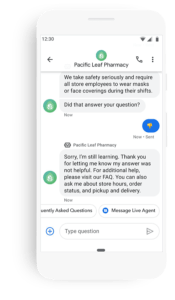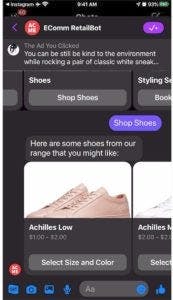

By mid-2016, companies had launched over 11,000 Facebook Messenger bots. Thousands of articles and billions in venture funding heralded their disruptive arrival on the customer service scene. Yet consumers didn’t take to them.
Most of these bots lacked crucial characteristics. They had poor CX, misunderstood simple commands, and didn’t pass user requests along to human agents. These bots were often more frustrating than the automated phone systems they were designed to replace.
But bots are booming once again and these ones are of a much higher caliber because they exhibit all, or at least most, of the most useful characteristics.
Here are the 15 Most Useful Features of a Chatbot
1. Able to learn
There’s nothing more frustrating than having to repeat yourself to a bot over and over. If you tell a chatbot once that you live in New York, it now remembers this and other relevant information for future interactions using what’s known as progressive profiling.
2. Able to fail usefully
Chatbots are now built to realize when a request exceeds their abilities. They now escalate complex issues to human agents and record the data so creators can prioritize features in the bot’s product development.

3. Personalized
Along with remembering things like a customer’s name and reason for seeking support, chatbots can now show more empathy and adjust their language and tone based on context. For example, acknowledging that a flight cancellation is inconvenient, rather than treating it with nonchalance.

4. CX-first
Chatbots can prompt users with a menu of options, sometimes based on previous interactions. If the chatbot is unable to handle a complex request, it instantly escalates the issue to a human agent. What it doesn’t do is repeat, “Sorry, I didn’t get that” over and over.

5. Accessible
Chatbot interfaces now must be equally accessible to all customers, regardless of language proficiency or any visual or hearing impairments. Bots should be able to read text aloud for the visually impaired, for example.
6. Secure
In the wake of recent data breaches, bots are more secure than ever. Many are now entirely transparent about what data they collect and what they use it for. Users often have the the option to opt out of data collection, if desired.
7. Explainable
Yesterday’s chatbots were built on machine learning or neural network algorithms which, while they could reach the right conclusions, couldn’t explain their reasoning. This prevented teams from diagnosing their poor service. (Let’s not forget Microsoft’s Tay, which was given far too much information too fast without the proper understanding of how to filter it.) Today’s support chatbots are more transparent and use explainable forms of AI that allow teams to improve the service.
8. KCS-friendly
Short for knowledge-centered service, KCS is a method and set of guidelines for building and preserving organizational knowledge. It’s great for creating artificially intelligent machines, as it gives bot creators a roadmap to follow to make sure chatbots are ethical, helpful, and improve over time.
” The future isn’t about downloading another app. We are moving into a world where you can do everything with a brand with simply a conversation. A conversation that remembers your preferences, learns over time, and creates the best customer experience: a conversational customer experience. We now have the resources and an end-to-end solution to own the customer experience from marketing and sales all the way to service. “
Shane Mac – Chief Automation Officer, Conversocial, A Verint Company
9. Omni-channel
Today’s chatbots are able to relay information across different support channels. If a customer gives a bot their order number, email address, or any other personal information and it comes time for the bot to transfer the customer to a website, that information is loaded into their order form.
10. Free to explore
Today’s chatbots can crawl the internet and company intranets looking for answers to customer queries. As the customer knowledge base improves, so do the chatbot’s answers, and they can learn which articles were useful and which ones weren’t.
11. Analytical
A great chatbot will be able to suggest and recommend products and services for a user based on current or previous interactions. This helps shoehorn more customer issues into upsells automatically, without involving an agent.
12. Uses the right language
It’s the first thing to consider when creating a persona for your chatbot. It’s often the first port of call for a new prospective customer, so should be an extension your brand. Begin by choosing a few phrases that your bot, and brand’s ‘personality, would be likely to say or not say – it’s how to develop a successful persona.
13. Able to resolve in-channel
There’s nothing a customer dislikes more than leaving a conversation with a brand feeling like they’ve not achieved what they wanted. By creating flows that are contextual and specific, and integrating your brand’s backend systems for payments or bookings (for instance), the most common use cases can be quick and straightforward to resolve. It also means the bot will recognize when it needs some human intervention, which brings us to….
14. Knows when to hand over
Sometimes customer queries are too complex for a chatbot to resolve, so handing off to an agent is required. Automation works best as a blend of the scalability of bots and the empathy of humans and knowing when which of the two are required.
15. Doesn’t stand still
A chatbot will always need to iterate based on previous interactions. By studying what consumers are saying, working out where customer drop-off and recognizing the relevant intent you can tweak automation flows to optimise the experience.
Learn more about how Verint Bots allow brands to scale customer conversations over social media and private messaging channels.